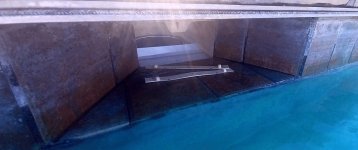Yes, I've seen them - there are millions of threads on replacing broken skimmer weir doors & hinge assemblies.
Which, let's be frank, IS the problem.
While researching the forum I found a pool noodle retrofit, and I found people reversing the weir doors, and others complaining about the need to fit both arms and your head into the skimmer to assemble, I haven't seen anyone retrofit the cheap garbage expensive plastic with a plastic support plate. At least not yet.
I have very thin aluminum keep-out signs which might work (but I'm not sure what happens to aluminum in a pool).
Has anyone fitted (glued) a thin plastic (or stainless steel) backing plate to the weakest portion of the classic 8650-4 weir door & 8650-8 weir hinge assembly?
Does any retrofit work?
Having done it yourself, what's your hard-won advice?
Which, let's be frank, IS the problem.
- Why should weir doors break so often?
- What's a permanent retrofix fit?
While researching the forum I found a pool noodle retrofit, and I found people reversing the weir doors, and others complaining about the need to fit both arms and your head into the skimmer to assemble, I haven't seen anyone retrofit the cheap garbage expensive plastic with a plastic support plate. At least not yet.
I have very thin aluminum keep-out signs which might work (but I'm not sure what happens to aluminum in a pool).
Has anyone fitted (glued) a thin plastic (or stainless steel) backing plate to the weakest portion of the classic 8650-4 weir door & 8650-8 weir hinge assembly?
Does any retrofit work?
Having done it yourself, what's your hard-won advice?
Attachments
Last edited:



















